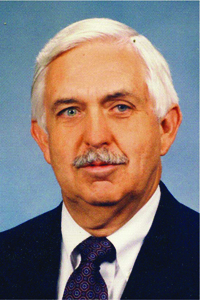Program Information
The Elements of a Highly Effective Educational Session
P Sprawls1*, G Frey2*, D Breckenridge3*, (1) Sprawls Educational Foundation, Montreat, NC, (2) Medical University of South Carolina, Charleston, SC, (3) The American Board of Radiology, Tucson, AZ
TU-C-116-1 Tuesday 10:30AM - 12:30PM Room: 116The class or conference room is the common setting for educational sessions in both academic institutions and continuing education conferences and programs such as those sponsored by the AAPM. A major value of a class/conference room program is one of efficiency by bringing a group of learners together to share in a common learning experience under the guidance of one or more learning facilitators (lecturers or presenters). The challenge is providing truly effective learning, especially in the field of medical physics. An effective learning activity is one which enables an individual to perform specific functions or tasks. The design of an educational activity needs to take into consideration the desired outcomes with respect to what the learners should be able to do. The distinction is that of being able to apply the knowledge to perform specific physics functions rather than just knowing and being able to recall facts, and perhaps do well on written examinations. These are two different types of knowledge structures within the human brain and distinctly different learning activities to develop each. Much of medical physics education, especially at the post-graduate and continuing education level, is for the purpose of enhancing the ability of physicists and other related professionals to perform applied procedures and tasks. An example we will use in this session is optimizing CT image quality and dose. The knowledge structure for this is best developed by observing and interacting with the physics activities that are being studied by working directly in the laboratory, clinic, or other real-world environment under the direction of a knowable leader.
The major limitation of the class/conference room is its physical separation from the applied physics activities taking place elsewhere and the limitation on one-to-one or small group activities. In this session we will focus on five initiatives that will consider these limitations and contribute to more effective class/conference room activities. They are:
• Effective representations of the physics reality in the classroom
• Development of useful knowledge structures in the human brain
• Efficient utilization of class/conference room time and resources
• Guided interactions, feedback, and real time assessment
• Testing and verification of achievement.
The function of the human brain will be considered with respect to learning experiences that contribute to effective medical physics knowledge structures. The characteristics of various types of educational activities will be compared with respect to their effectiveness for producing desired outcomes along with their limitations. The design of highly-effective classroom/conference presentations and activities will be demonstrated with an emphasis of using technology to enhance human performance of both learners and the learning facilitators.
The value and process of assessment for both the learners and facilitators/instructors during class activities will be described along with techniques to improve the use of audience response systems.
There are many issues associated with the design of effective testing and question writing. This session will discuss effective test design which includes determining the best form of testing to use. Forms of testing will be discussed. Planning tests to assure reliability and effectiveness will be considered. Item writing requires knowledge of effective techniques to make sure questions are clear and unambiguous.
Learning Objectives:
1.Develop and provide highly effective medical physics educational sessions.
2.Use technology to enhance human performance in the educational process.
3.Integrate audience response systems into their presentations.
4.Understand various types of testing and determine which should be used in various circumstances
5.Write questions that are clear and effective
Contact Email:







